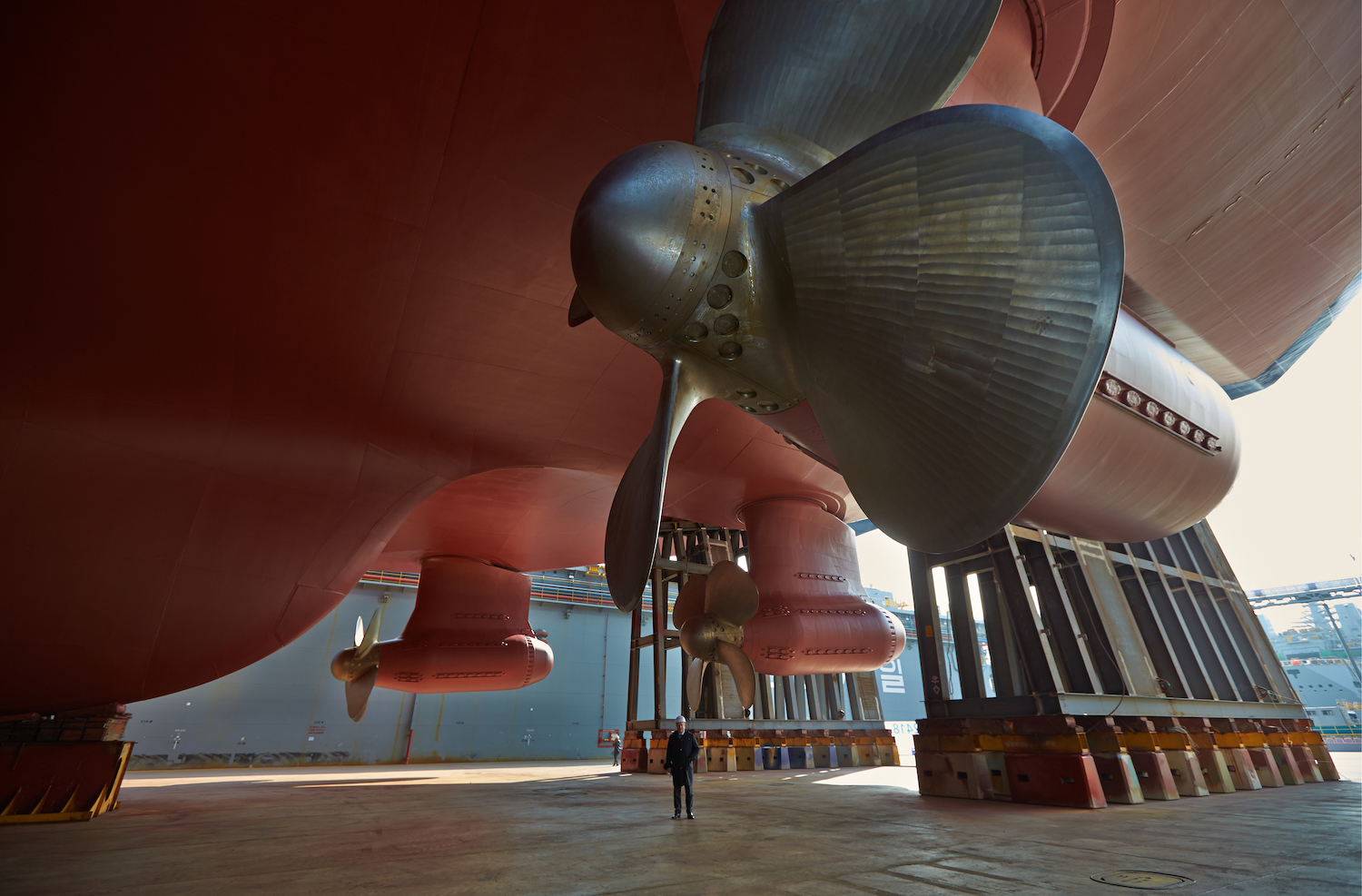There’s something about really big machines that makes the child in any of us wonderstruck. Case in point: really big ships, and their equally huge propellers.

An inspector checks out the propeller on cruise ship Oasis of the Seas. Image: ABB
We’ve had colossal propellers since the days of the Titanic, with its solid bronze, ten-foot-blade props. But these days, large ships require not just bigger propellers, but smarter, nimbler, greener propellers.
Videos by VICE
“The digital age arrived in the marine sector, too,” said Markus Gamper, media relations manager for ABB Ltd., a Swedish-Swiss conglomerate that manufacturers large marine propellers. “There’s a technological shift happening and software development controlling drives and propellers keeps advancing.”
The trouble with really big propellers is that they’re usually attached to really big, energy-guzzling, pollution-spewing boats, such as cruise ships, container ships, and icebreakers. But Gamper told me massive propellers can actually play a role in making these behemoth machines a little greener.

The Yamal icebreaker ship. Image: ABB
He pointed to ABB’s Azipod thrusters, propellers of up to 20 feet that combine an entire propulsion system. Traditionally, Gamper explained, propellers would be connected to a long shaft line and powered by a mechanical diesel motor to move the ship. All the steering was left up to a series of rudders. But the Azipods have their own electric motor, and can spin 360 degrees, meaning they can be used for steering, too.
“The electrical propeller motors are controlled by drives that control the speed of the propellers,” Gamper explained. “The electric propulsion system is therefore able to run the diesel engines at or close to their optimum efficiency point regardless of the vessel’s speed. This results in significant fuel savings.”
It also makes it easier for massive ships to adopt greener fuels, such as Polaris, the world’s first natural-gas-powered ice breaker.
Other players in the big propeller market have taken similar strides in improving technology. Mecklenburger Metallguss GmbH—which manufactured a 34-foot propeller that is very likely the largest on the seas currently—also uses an integrated drive system in its “5D” props, which the company claims can cut fuel usage by 14 per cent. And modern propellers are integrated with smart, data-collecting sensors that help track how a ship is moving and make more efficient decisions, while also tracking any maintenance needs.
Really big ships are never going to be the most green machines on the planet, but it’s nice to know that the industry is serious about reducing the carbon footprint of these vehicles, starting with arguably the coolest part: really fucking big propellers.
Get six of our favorite Motherboard stories every day by signing up for our newsletter.




